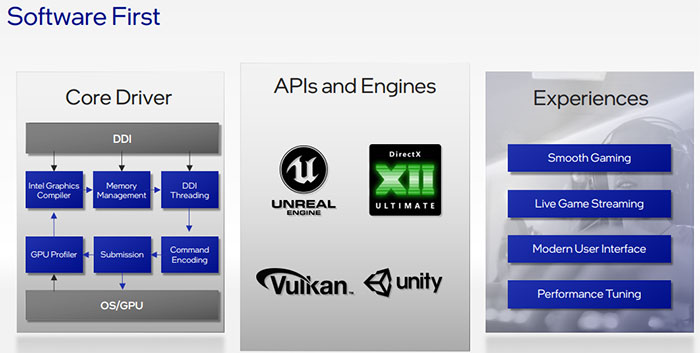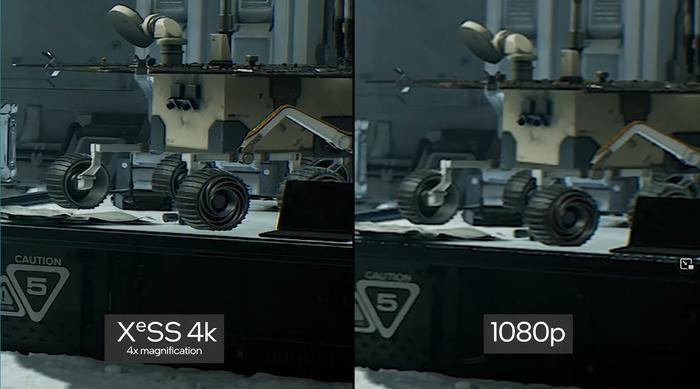During its Architecture Day event earlier today, Intel's GPU software team leader Lisa Pearce discussed the core driver, APIs and Engines, and Experiences users can expect with Intel ARC Alchemist GPUs. In the presentation embedded below, Pearce's segment starts at 3 mins and 25 seconds (it includes some games engine and demo footage too).
Intel is following a 'software first' strategy with Arc Alchemist, according to Pearce. Below you can see the tangents this brings together, which is all well and good, but probably the most interesting part of the presentation focussed upon a feature called XeSS.

XeSS is an abbreviation of Xe super sampling, and in case you are still not aware of what this is – it is Intel's take on next-gen upscaling tech – a rival to Nvidia DLSS and to AMD FSR.
Intel has some bold claims for its XeSS technology as demonstrated in some Unreal Engine 5 scenes, namely that 1080p source material upscaled to 4K using XeSS "gives the same quality image as native 4K". The screens in the video demo make it look really good, and we also see magnified comparisons showing how grainy the 1080p source can be.

So, how does XeSS work? Above, we mentioned that this Intel upscaling tech is more similar to Nvidia's efforts, as it makes use of dedicated AI processing on the GPUs (the XMX Ai accelerators). Specifically, Intel says XeSS "uses deep learning to synthesize images that are close to the quality of native high-resolution rendering". This doesn't create as much GPU work as native rendering, so you can run games at higher-quality settings and higher resolutions.
Some useful bullet points provided by Intel to outline XeSS are reproduced below:
- XeSS works by reconstructing subpixel details from neighbouring pixels, as well as motion[1]compensated previous frames
- Reconstruction is performed by a neural network trained to deliver high performance and great quality, with up to a 2x performance boost1
- XeSS delivers AI-based super sampling on a broad set of hardware, including integrated graphics, by leveraging the DP4a instruction set
Last but not least on the topic of XeSS, several game developers are engaged on implementing XeSS in their projects, according to Intel. From the video above, you know it is being integrated into Unreal Engine, for easy adoption. The SDK for the initial XMX version will be available for ISVs this month, with the DP4a version available later this year.
Click to zoom image
At first glance XeSS looks impressive but as is always the case the proof of the pudding will be in the eating, and we must reserve judgement until expert third parties can dabble with Intel's exciting new Arc Alchemist graphics cards with XeSS enabled in shipping games. It would be particularly interesting to see it compared in games that feature real-time ray tracing and Nvidia DLSS 2.x, for example.














